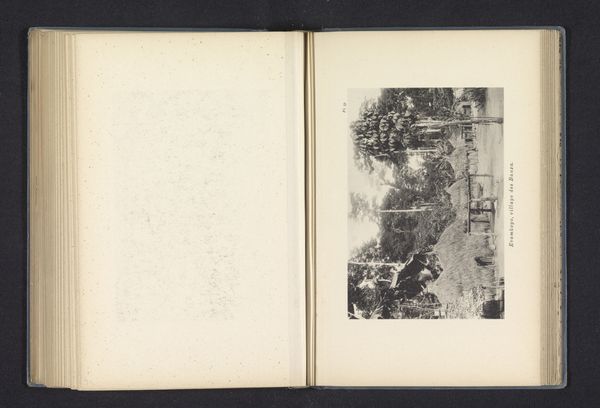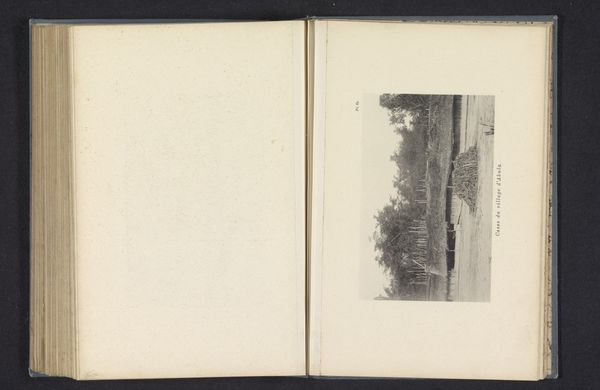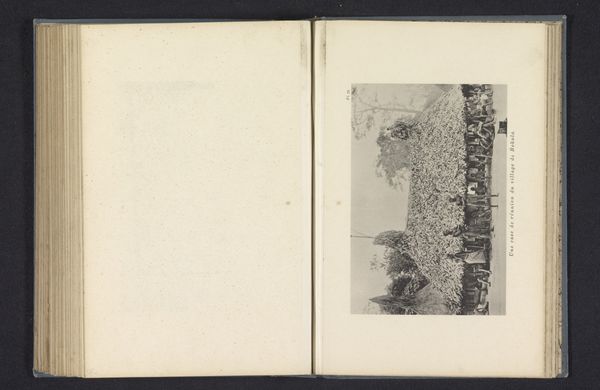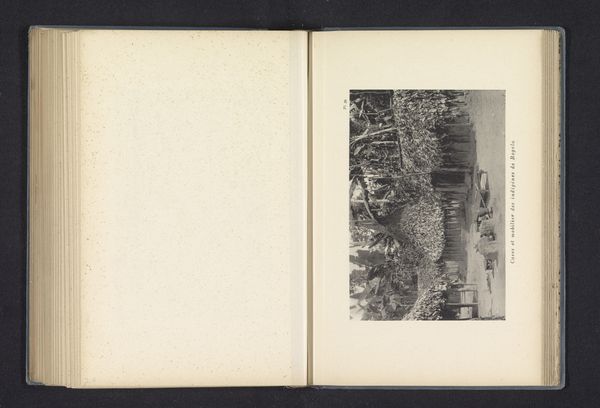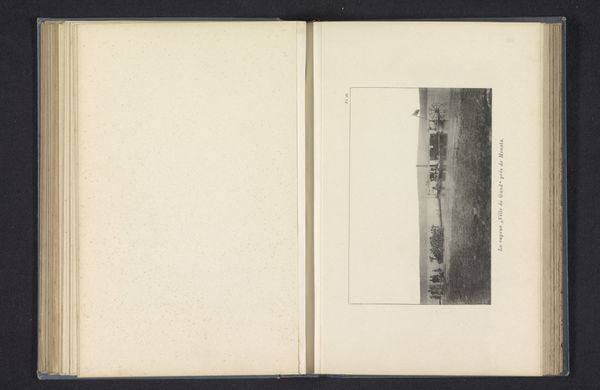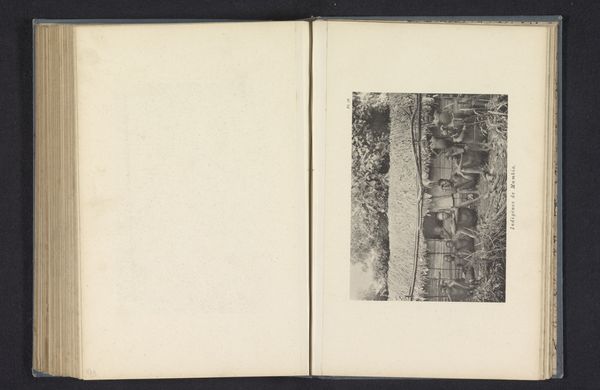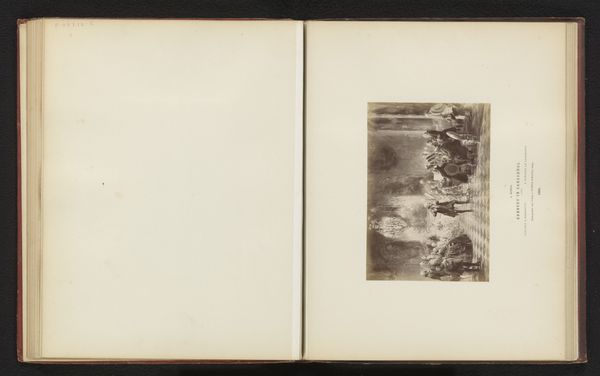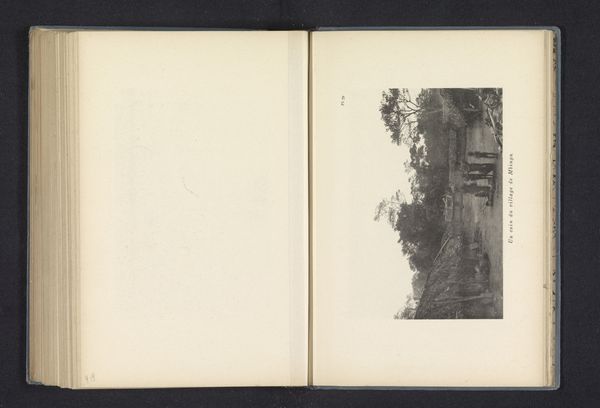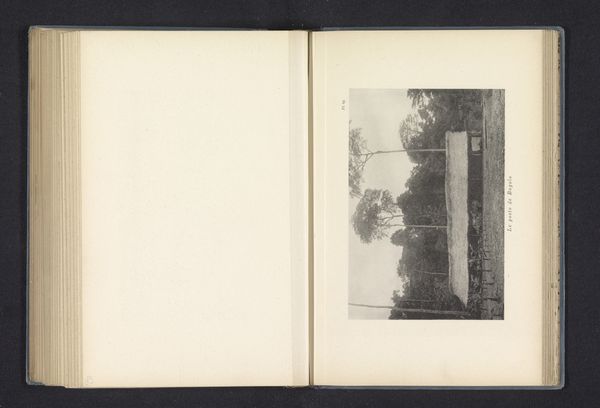
print, photography
# print
#
landscape
#
photography
Dimensions: height 110 mm, width 145 mm
Copyright: Rijks Museum: Open Domain
Curator: Let's delve into "Laan met meloenbomen te Kwamouth," or "Avenue of Melon Trees at Kwamouth," a print made from a photograph taken in 1896 by Franz Thonner. It depicts a landscape, presumably in the Belgian Congo. Editor: My initial impression is of profound quiet. It feels like a moment captured at dawn. There's a soft light kissing the melon trees... or are they papaya trees actually? It makes me want to slip into my walking shoes and wander down that path. Curator: Ah, you're right, they are referred to as papaya in some records. The print serves as both art and record, documenting the cultivated landscape of a colonial enterprise. Consider the paper stock, the ink, the printing process itself; these are all commodities and outputs of labor, reflective of resource exploitation at the time. The photograph becoming a printed image transforms not just the image, but its purpose and circulation. Editor: Thinking of the actual labor— I see these trees as being intentionally arranged along the path. Did those who planted and tended these trees get to enjoy their fruit? Did Thonner take this picture for simple beauty, or did the location also have some significance in documenting the occupation itself? Curator: Exactly. What were the relations of production behind this cultivated scene? This print, viewed within that context, shows us not simply a landscape, but something very loaded with issues of ownership, labor and distribution. This image carries echoes of extraction and colonial power dynamics. Editor: The composition also tells a story, doesn't it? The dark trees on either side act almost as sentinels, watching over a pathway that promises coolness and... escape, almost, in a brutal, hot climate. But I cannot help but feel a melancholic sense, this landscape whispers to us across the decades. Curator: Yes, and consider that melancholy further: how is the perception shaped, not simply by individual, artistic intention, but also shaped by colonial narratives and commodity production inherent to art practices? The melancholy may be read as being linked to violence and oppression as part of resource acquisition at the time. Editor: Well, it makes me want to look beyond what's plainly presented to those implicated labor, the hands that cultivated this beauty. Curator: Indeed. Perhaps this work asks us to consider how landscapes both reveal and conceal those complex social forces at work behind their creation.
Comments
No comments
Be the first to comment and join the conversation on the ultimate creative platform.
